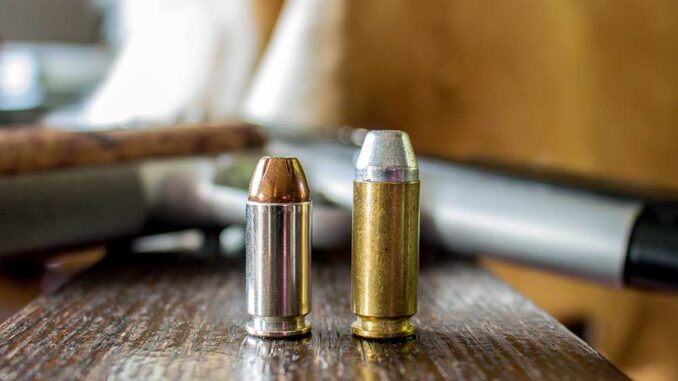
The world of handguns is vast and complex, with a myriad of calibers each offering unique characteristics. Among these, the 10mm and .40 Smith & Wesson (S&W) stand as prominent choices for both hunting and self-defense. This article aims to provide an in-depth analysis of these two calibers, elucidating their distinct features, performance, and practical applications.
| Aspect | 10mm Advantages | .40 S&W Advantages |
|---|---|---|
| Power | Higher velocity and stopping power | Sufficient power for self-defense and hunting |
| Recoil | Suitable for experienced shooters | More manageable, better for rapid fire |
| Compatibility | Effective for hunting and self-defense | Compatible with a wide range of handguns |
| Cost | Higher performance with handloading | Generally more affordable |
| Suitability | Preferred by enthusiasts and for specific professional uses | Ideal for a variety of scenarios, including law enforcement |
The 10mm Caliber: Power and Versatility
The 10mm caliber is renowned for its potent performance, especially favored in hunting scenarios. Originating from the desire for a more powerful handgun cartridge, the 10mm delivers remarkable stopping power, making it ideal for hunting medium to large game such as deer and hogs. Factory loads like the Federal Premium Trophy Bonded or Buffalo Bore, which typically feature 180 grain bullets, are particularly effective, ensuring deep penetration and significant wound channels at reasonable hunting ranges.
Despite its impressive power, the 10mm is also known for its notable recoil. This characteristic necessitates the use of heavier, more robust firearms capable of managing the substantial muzzle energy. The recoil can pose a challenge, especially in rapid fire or double tap scenarios, potentially impacting accuracy. This makes the 10mm less suitable for novice shooters or those with a smaller frame who might find the recoil overwhelming.
However, the 10mm is not just confined to hunting. It has also found its place in self-defense and law enforcement. Its effective range and stopping power make it a viable option for personal protection, though its recoil and the larger size of 10mm firearms might limit its suitability for some users. In terms of law enforcement, the 10mm saw a surge in popularity in the late 20th century, although it has been largely overshadowed by other calibers like the 9mm in recent years.
The .40 S&W: A Balanced Approach
The .40 S&W was developed as a response to the demand for a more manageable caliber, retaining much of the stopping power of the 10mm but with reduced recoil. It emerged from a collaboration between Smith & Wesson and Winchester in the late 1980s, initially intended to offer law enforcement a more effective round than the 9mm, without the substantial recoil of the 10mm.
With its shorter case and reduced powder charge compared to the 10mm, the .40 S&W offers a more comfortable shooting experience, making it an excellent choice for self-defense, particularly in rapid-fire situations where managing recoil is crucial. Its performance in terms of ballistics is impressive; it delivers sufficient energy to effectively stop threats at close to medium ranges. This balance between power and manageability has made the .40 S&W a popular choice among law enforcement agencies and civilian shooters alike.
In terms of versatility, the .40 S&W is compatible with a wide range of handguns, from compact models suitable for concealed carry to larger frame pistols ideal for open carry or home defense. This versatility, coupled with its effective ballistics, makes the .40 S&W a highly adaptable caliber. It strikes a middle ground, offering more power than the 9mm while being more controllable than the 10mm, making it a suitable choice for a broad spectrum of shooters.
Conclusion: Choosing Between 10mm and .40 S&W
When deciding between the 10mm and the .40 S&W, several factors come into play. The 10mm is unparalleled in its power and range, making it an excellent choice for hunting and situations where stopping power is paramount. However, its recoil can be challenging to manage, especially for less experienced shooters. On the other hand, the .40 S&W offers a more balanced experience, providing significant stopping power with more manageable recoil, making it well-suited for self-defense and a variety of shooting applications.
Ultimately, the choice between these two calibers will depend on the individual shooter’s needs, preferences, and comfort level with recoil. Both calibers have their distinct advantages and cater to different shooting scenarios, making them valuable additions to the arsenal of any firearm enthusiast.

Leave a Reply